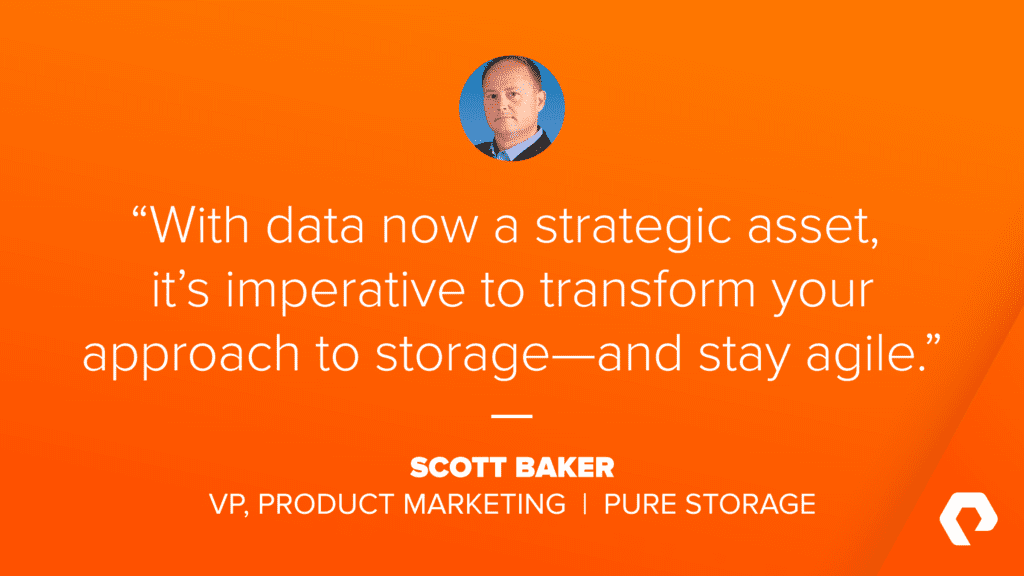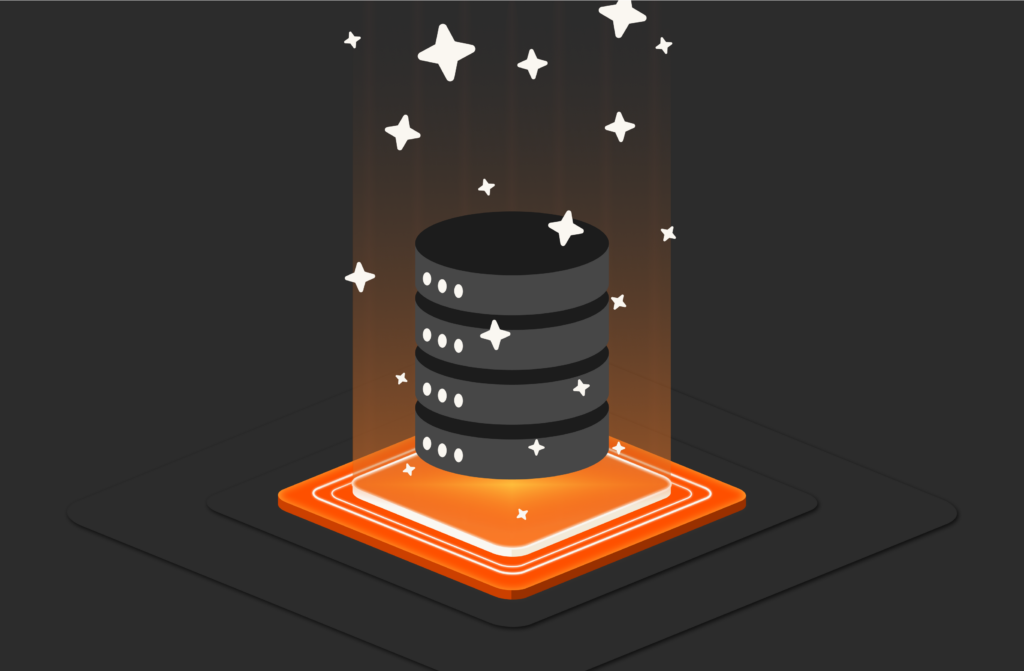At Pure Storage, we’re not surprised by Dell’s launch of PowerStore, a new midrange storage system. Dell was in a tough spot—with four midrange storage options, they had to consolidate and end-of-life some of their products. So, Dell shifted to a single platform with PowerStore (in addition to their Unity Hybrid appliance).
But Dell’s decision wasn’t necessarily the right one for its customers. They didn’t design the new offering for end-to-end NVMe, for example, choosing to continue relying on SAS and SSD instead of 100% NVMe and raw NAND. They also stepped backward in terms of reliability, removing Sync Rep and relying on RAID 5.
Another move, which makes Dell’s offering look a lot like a forced downgrade, is the decision not to make the upgrade process seamless for their existing all-flash customers.
Why are we telling you this? We welcome competition in this space and we’re not here to sling mud. But we’re passionate about delivering a modern data experience that’s proven to work, reduces risk, and is truly Evergreen™. We don’t think PowerStore meets those goals. We do think Pure is the better choice: a true upgrade that’s Evergreen, and on a proven platform.
At an uncertain and turbulent time, no one wants to make a costly misstep about storage. Here’s our take on where we believe PowerStore falls short of what organizations really need from storage.
Where Dell PowerStore Misses the Mark
CPU Investments
The PowerStore line appears to be based largely on Dell’s current Unity XT hardware, with some refreshed components. We were surprised by the use of Intel Skylake-SP series CPUs.1
Given the option to run PowerStoreOS functions in virtual instances in containers, and the emphasis on the value of the AppsON feature, we’d have expected the new offering to use the current Cascade Lake chipset, with its 84% performance improvement2 over the Skylake-SP CPU released in 2017.
The inclusion of an all-SCM array is even more unusual. Why go to the trouble and expense of adding storage-class memory3 when you didn’t ship the most current and performant processors available?
Not Designed End-to-End for Flash
We believe that limiting the use of NVMe only to the appliance chassis is a poor design choice, especially when the right choice was obvious. However, we were pleased by Dell’s decision to color-code their NVMe drive tabs with Pure Orange, even if it was a coincidence – at least they got the styling right.
NVMe support must extend to the capacity-expansion shelves. Forcing customers to expand using SAS drives in up to three additional shelves4 could be marketed as a “hybrid” storage approach, but it doesn’t deliver a system designed for true scale-up performance. It certainly can’t be classified as “all NVMe.” Also, the Dell solution still relies on legacy SSDs instead of taking the modern advantage of raw flash.
In the current configuration, data placement will likely be more complicated depending on usage characteristics and which data will tolerate the single points of contention and slower-performing architectures of SAS compared to NVMe. SAS is a disk-era option—there’s no modern place for it in a flash world.
Data Safeguarding—Synchronously and Asynchronously
Asynchronous block replication is the only native replication offering5 in the initial PowerStore release. But we believe that alone isn’t enough to ensure proper safeguarding of all data and workloads. This is a clear downgrade from VNX and Compellent: Dell is apparently asking its customers to move backward in terms of reliability.
We’d expect to see native synchronous replication. That would allow customers to rely on automatic, business-continuous responses through disruptive events. For example, the Pure ActiveCluster™ solution is symmetrically active-active and allows transparent failover. It lets customers build and manage active-active, multi-site data centers over metro area distances.
Dell’s solution is missing near-synchronous replication to allow quick response to outages that affect large areas, or to support customers with disaster-recovery sites separated by geographic distances too great to allow for synchronous replication.
Disruptive Transitions
PowerStore is a new product to be sure. But if its eventual purpose is to be Dell’s only midrange offering, then making it easy for customers to transition should be front and center. Right now, a move to PowerStore appears to be a disruptive forklift upgrade that requires the customer to:
- Rewrite automation scripts
- Rebuy capacity from existing SAS to the new NVMe appliance chassis
- Manually migrate data from XtremIO, Unity, VNX2, SC series, and PS series
Without introducing a professional-service offering, at least providing an automated script-conversion tool would be a huge benefit to existing customers considering this change. Another option: Let customers repurpose the SAS media in an expansion shelf, assuming compatibility isn’t an issue.
As for the data migration, we hope it’s intelligent enough to manage the complete process in a phased way so that the source array can continue to receive I/O. For example, pin or stub the legacy read-only files to which they’re migrated to support data access or rerouting, thus leaving the heavier lifting for resolving and migrating the daily accessed and written files from the source to the target array.
Migrations aren’t always simple. Each journey is different. If you must endure a migration, it’s better to choose an option like Pure that doesn’t saddle you with unproven tech. Non-disruptive migrations need to be just that: non-disruptive. They should be proven and reliable, without caveats or complex footnotes.
Scale Matters, Especially in Unified Systems
As a midrange product in a broader storage portfolio, vendor-imposed borders impact the degree to which a product scales. So, we wonder why each array in the PowerStore offering supports the same capacity at very different price points.
When it comes to scale-out, federating PowerStore appliance clusters doesn’t create a truly distributed environment. This is especially true when data volumes remain isolated to the nodes on which they were created and require migration for any kind of load-balancing or controller upgrades. If true scale-out is part of the roadmap, moving beyond simple federation is critical to create a future-proof solution for complex workloads and expansive data sets.
Finally, forcing customers to define “Protocol Personality” during initial configuration isn’t really unified (referring specifically to the PowerStore T’s Unified and Block modes). This is especially true in a multi-appliance cluster, in which file capabilities are limited to only the first appliance in the cluster acting as a master,6 and where a decision to change the personality essentially means data and workload evacuation to allow a “factory reset” on the appliance.
The Better Choice: A Modern Data Experience
Forbes contributor Stephan Zoder asserts that data can be as valuable to a business as its trademark. How your employees use and interact with data is, of course, critical to sustained business success. With data now a strategic asset, it’s imperative to transform your approach to storage—and stay agile. That way, your teams will never be constrained in their ability to access and work with your data most effectively.
Decisions about storage shouldn’t leave you with doubts: They should assure you with certainty. So, if you’re faced with a choice and worried about making a change—especially at a time when the prospect of more change can be nerve-wracking—we urge you to consider Pure.
At Pure, it’s our responsibility to make every bit of your data available to your business in the most insightful way possible so that you can use it to take informed action. We do this with an Evergreen data foundation capable of storing, safeguarding, mobilizing, and managing access to your data. It’s an approach that doesn’t require you to tolerate trade-offs in creating a modern data experience.
Read what my colleague Prakash Darji has to say in “Dell PowerStore: Solving Dell Problems vs. Customer Problems.”
1 “VMware Systems Compatibility Guide,” May 2020
2 “Cascade Lake Shows Up to 84 Percent Gen-on-Gen Advantage on STAC Benchmarking,” May 2019
3 www.dellemc.com/en-us/collaterals/unauth/white-papers/products/storage/h18149-dell-emc-powerstore-platform-introduction.pdf, April 2020; page 12, section 3.2.1.2
4 www.dellemc.com/en-us/collaterals/unauth/white-papers/products/storage/h18149-dell-emc-powerstore-platform-introduction.pdf, April 2020; page 19, section 3.3
5 www.delltechnologies.com/en-us/collaterals/unauth/white-papers/products/storage/h18153-dell-emc-powerstore-replication-technologies.pdf, May 2020; page 9, section 2.0
6 www.dellemc.com/en-us/collaterals/unauth/white-papers/products/storage/h18157-dell-emc-powerstore-clustering-high-availability.pdf, April 2020; page 10, section 2.2





